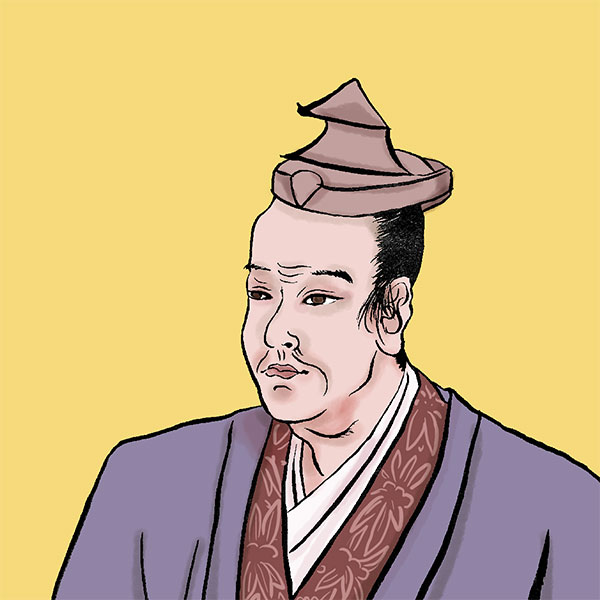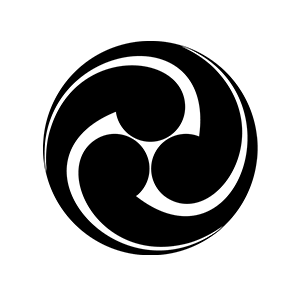- Fukuchiyama domainProduced several cultural daimyo
- Fukuchiyama Domain was a domain that existed in Fukuchiyama City, Kyoto Prefecture. At the end of the Muromachi period, it was the domain of Akechi Mitsuhide, famous for the Honnoji Incident. As a result, the lord of the castle was not stable until the early Edo period, and the ruling family changed rapidly. Finally, Kutsuki

Fukuchiyama CastleFukuchiyama City, Kyoto Prefecture
| Other name | Yokoyama Castle, Garyu Castle, Hachiman Castle, Fukuchiyama Castle, Kakiage Castle |
|---|---|
| castle construction | 1579 |
| address | Naiki 1, Fukuchiyama City, Kyoto Prefecture |
| telephone number | 0773-23-9564 |
| Opening hours | 9:00-17:00 (Admission until 16:30) |
| closing day | Every Tuesday (the next day if it is a holiday) / December 28th to 31st / January 4th to 6th |
| Admission fee | Adults 330 yen / Children 110 yen |
- Access to Fukuchiyama Castle
- Approximately 15 minutes walk from Fukuchiyama Station on the JR/Kyoto Tango Railway.
HISTORYFukuchiyama Castle built by Akechi Mitsuhide
Fukuchiyama Castle is a Hirayama castle located in Fukuchiyama City, Kyoto Prefecture. It was built by Akechi Mitsuhide on the orders of Oda Nobunaga, and during the Edo period it functioned as the domain office of the Fukuyama domain. It is also counted as one of Japan's 100 famous castles. Let's unravel the history of Fukuchiyama Castle.
- From the Muromachi period to before the construction of Fukuchiyama Castle
- The predecessor of Fukuchiyama Castle is said to be Kakiage Castle, which was built on the side of Mt. Hachiman by Yorikatsu Shiomi, a native of the Fukuchiyama region. Yorikatsu Shiomi later changed his surname to Yokoyama, and the castle's name was also changed to Yokoyama Castle. In 1575, Akechi Mitsuhide was ordered by Nobunaga Oda to capture Tanba, and it took him nearly four years to subdue it. Mitsuhide Akechi's Tanba Heidō is very dramatic, so if you are interested, it would be interesting to look into it. After the pacification of Tanba, Akechi Mitsuhide changed Yokoyama Castle to Fukuchiyama Castle and rebuilt it into the modern castle it is today. Yokoyama Castle is famous for being a castle in Nagahama City, Shiga Prefecture, which Oda Nobunaga took from the Azai clan and entrusted the castle guard to Hashiba Hideyoshi (later Toyotomi Hideyoshi), but at that time there were few castles with the same name in Japan. There was no.
- From Akechi Mitsuhide's castle renovation to the end of the Edo period
- Mitsuhide Akechi, who renamed Yokoyama Castle as Fukuchiyama Castle and renovated it into a modern castle, placed Fujiki Gonbei and Akechi Hidemitsu in charge of the castle. Hidemitsu Akechi is said to be Mitsuhide Akechi's son-in-law and cousin, but the exact relationship is still a mystery. In 1582, the Honnoji Incident occurred. Hidemitsu Akechi sided with Mitsuhide Akechi, took the lead, and achieved great deeds, but Hashiba Hideyoshi's army soon invaded Fukuchiyama Castle and captured Hidemitsu Akechi's father, who was guarding the castle in his stead, and in July of the same year. He will be executed at Awata Castle in May. In addition, Hidemitsu Akechi escaped to Sakamoto Castle in Shiga Prefecture and fought a siege battle with Hideyoshi's army for a while, but after killing his wife and children and his own wife at this castle, he committed suicide by seppuku. did. Akechi Mitsuhide was killed on his way to Sakamoto Castle after the Honnoji Incident. It was three years after Akechi Mitsuhide renovated Fukuchiyama Castle into a modern castle and became the castle's lord.
After Mitsuhide Akechi passed away, Hidekatsu Hashiba, the fourth son of Oda Nobunaga and adopted son of Hideyoshi Hashiba, became the lord of Fukuchiyama Castle, but he died at the young age of 18. After that, Ietsugu Sugihara, who became the lord of the castle, was in his fifties, an old man at the time, and died of illness not long after becoming the lord of the castle. After that, Shigekatsu Nogi became the lord of the castle. Shigekatsu Nogi sided with the Western army at the Battle of Sekigahara in 1600 and attacked Tanabe Castle, where Hosokawa Yusai was barricaded. At this time, Hosokawa Yusai proposed a peace agreement, which Katsushige Nogi accepted. However, after the battle of Sekigahara made it clear who would win or lose, Hosokawa Tadaoki, a son of Hosokawa Yusai, attacked Fukuchiyama Castle with the permission of Tokugawa Ieyasu, captured Katsushige Nogi, and had him commit seppuku at Jusen-in Temple in Kameyama Castle.
After the Battle of Sekigahara, Fukuchiyama Castle became the lord of Yutaka Arima. Mr. Yutaka Arima further renovated Fukuchiyama Castle, which had been renovated by Mitsuhide Akechi, into the castle that remains today, and also developed the castle town. Mr. Yutaka Arima, who entered the castle with 60,000 koku, later increased the number of stones to 80,000 koku.
When the Arima Yutaka clan was transferred to the Kurume domain in 1620, the lord of Fukuchiyama castle became Mori Okanabe, but he was also transferred three years later and Norimichi Inaba, who later became the lord of the castle. He was the lord of the castle for 24 years, but he was forced into exile due to a dispute with Kyogoku Takahiro of the Miyazu domain. After that, Tadafusa Matsudaira was transferred from the Kariya clan and became the lord of the castle, but 20 years later he moved to the Shimabara clan. In this way, the ruling family of Fukuchiyama Castle changed rapidly every few to 20 years, but in June 1669, the Kuchiki family of Tsuchiura Castle was transferred, and since then the Kuchiki family has been in charge since the Meiji Restoration. He served as the lord of Fukuchiyama Castle until then. - Fukuchiyama Castle after the Meiji era
- When the feudal domain and prefecture were abolished in 1871, Fukuchiyama Castle was abandoned. In 1873, the castle buildings were demolished or sold, and the Ninomaru Plateau was reclaimed. It is said that the castle gate became the main gate of Kantaki-ji Temple, Shogen-ji Temple, Hoshu-ji Temple, and Myokaku-ji Temple, and is currently designated as an important document of Fukuchiyama City.
The copper gate guard station, which was located near the Ninomaru castle road, was moved to the castle tower during the Taisho era. In 1973 (Showa 48), a plan to rebuild the castle tower was brought up, but it was partially abandoned due to the inability to secure financial resources due to the oil crisis. However, in 1984 (Showa 59), a revival plan was brought up again, and after the "One Tile Campaign" which collected donations of 3,000 yen for one tile, the main tower was rebuilt in 1986 (Showa 61). it was done.
In 2017, it was designated as one of Japan's 100 Famous Castles.
In 2020 (Reiwa 2), a photo of the castle tower of Fukuchiyama Castle, believed to have been taken between the end of the Edo period and the beginning of the Meiji period, was discovered and became a hot topic.
Today, it is a symbol of Fukuchiyama City tourism and is visited by many people every year. - summary
- At Fukuchiyama Castle, only the stone walls remain as they were back then, the castle tower has been rebuilt, and the interior has been turned into a museum. In recent years, Akechi Mitsuhide has been reevaluated, and in Fukuchiyama City, town revitalization using Akechi Mitsuhide is also popular.
Read biographies related to Fukuchiyama Castle
- Mitsuhide AkechiOne of the wisest generals in the Sengoku period
- During the Sengoku period, the military commanders who left their names in history as Sengoku daimyo included military commanders with a variety of abilities, including those with good physiques, those with outstanding military exploits, those with excellent intelligence, and those with a talent for building castles. There was. Akechi Mitsuhide was particularly intelligent and was known for his abilities in the imperial court and the public.

History of the Fukuchiyama Domain, with Fukuchiyama Castle as its domain office
| Domain office | Fukuchiyama Castle |
|---|---|
| old area | Amada District, Tanba Province |
| stone height | 60,000 koku |
| Fudai/Tozama | Sotosama/Fudai |
| main lord | Arima family, Okabe family, Inaba family, Matsudaira family, Kuchiki family |
| Estimated population | 31,000 people (first year of the Meiji era) |




















